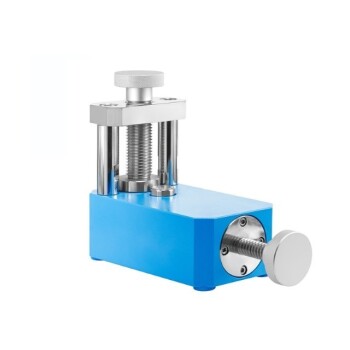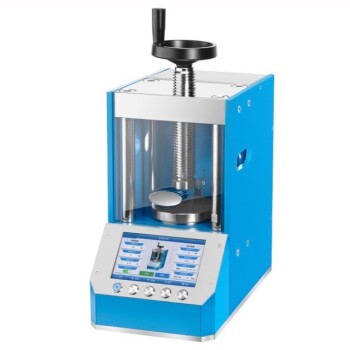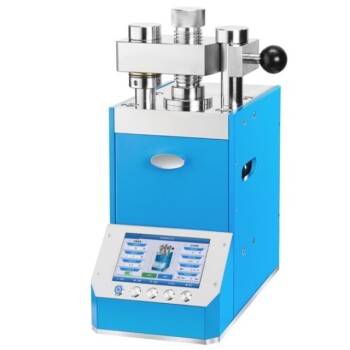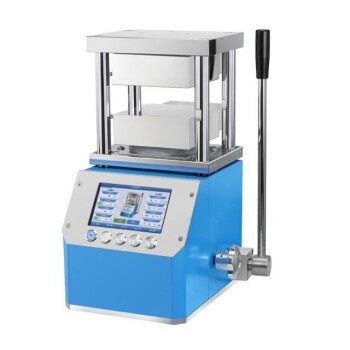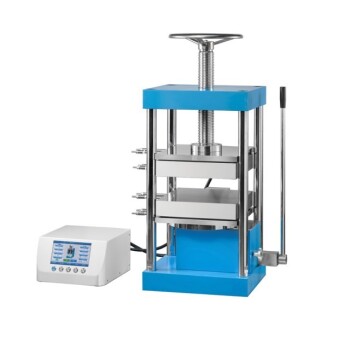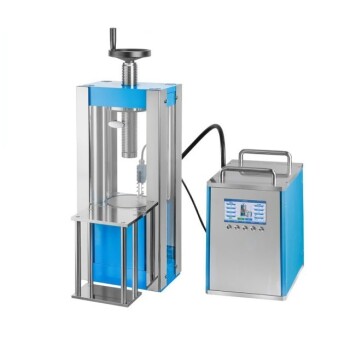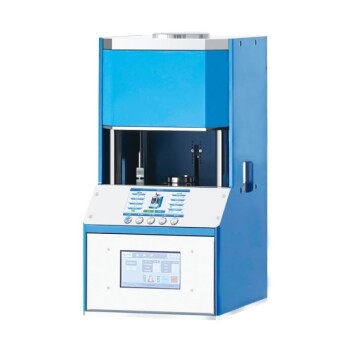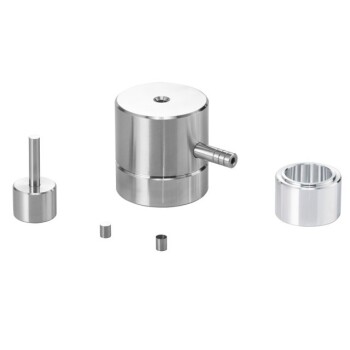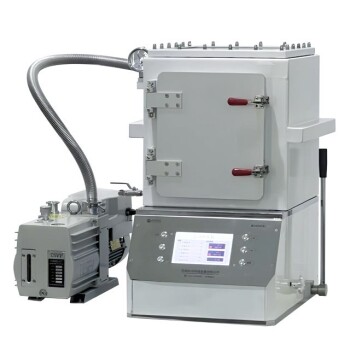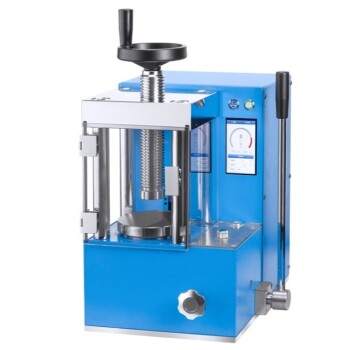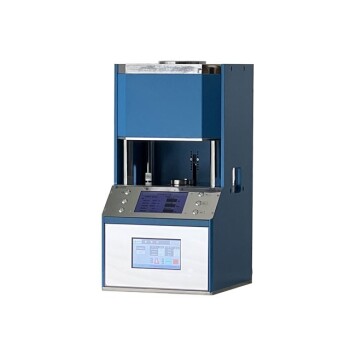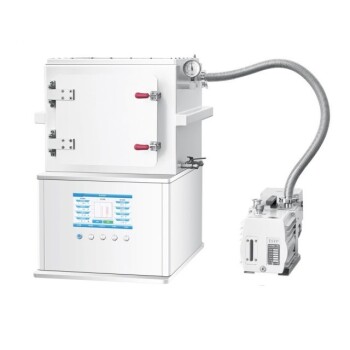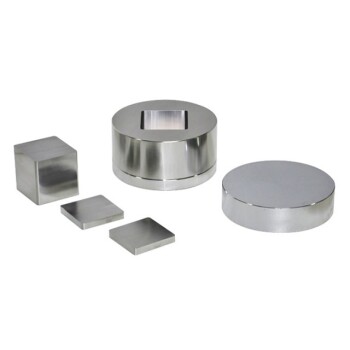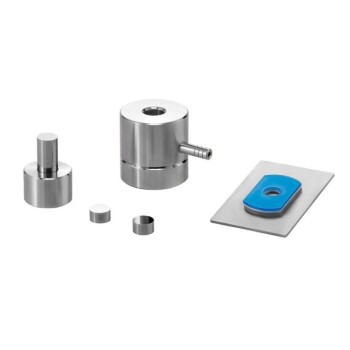In a laboratory setting, hydraulic presses are primarily used for two key functions: preparing materials for highly sensitive analysis and testing the physical limits of a substance. They apply immense, controlled force to compress powders into solid pellets or films, characterize a material's mechanical strength, or simulate high-pressure environments.
The core function of a hydraulic press in a lab is not just to crush things; it is to transform a raw, often inconsistent material into a uniform, measurable, and analyzable sample. This control over a material's physical state is what enables precise scientific insight.

The Primary Role: Precision Sample Preparation
The most common use of a laboratory press is to prepare samples for analytical instruments. Applying high pressure creates a homogenous sample, which is critical for obtaining accurate and repeatable data.
For Spectroscopic Analysis (FTIR & XRF)
Spectroscopy techniques analyze how a material interacts with light or X-rays. For this to work, the sample must be uniform.
A press is used to create KBr pellets for Fourier Transform Infrared Spectroscopy (FTIR). A small amount of sample is mixed with potassium bromide (KBr) powder and compressed into a thin, transparent disc, allowing infrared light to pass through for analysis.
Similarly, for X-ray Fluorescence (XRF), powders are compressed into dense, flat pellets. This ensures the X-ray beam interacts with a consistent surface, leading to more accurate measurements of the material's elemental composition.
For Structural and Chemical Analysis
Beyond spectroscopy, presses are used to prepare samples for other analytical methods.
For techniques like X-ray crystallography, compressing a substance into a thin pellet can help in determining its molecular structure more accurately.
Presses also aid in compound extraction by crushing or compacting biological or chemical samples, which can help break down cellular structures to release target elements or compounds for subsequent analysis.
A Second Key Role: Material Science and Testing
Hydraulic presses are fundamental tools in material science for understanding the physical and mechanical properties of substances.
Characterizing Mechanical Properties
By applying a precise, measurable force, scientists can test a material's strength, durability, and deformation behavior.
This process generates stress-strain curves, which reveal critical properties like elasticity, hardness, and the point at which a material will break. This is essential for developing and validating new materials for engineering applications.
Simulating High-Pressure Environments
Some research requires understanding how substances behave under extreme conditions, such as those found deep within the Earth or in industrial processes.
A hydraulic press can simulate these high-pressure environments in a controlled lab setting, allowing scientists to investigate changes in a material’s physical state, chemical stability, or crystalline structure.
Understanding the Limitations
While incredibly useful, a hydraulic press is a powerful tool with specific limitations that must be respected.
Risk of Sample Alteration
The immense pressure applied can sometimes alter the sample itself. This can induce phase changes or alter the crystalline structure of the material, which may interfere with the intended analysis.
Not a Universal Solution
Pressing is not suitable for all sample types or analytical techniques. For some materials, the preparation process is destructive or unnecessary, and alternative methods must be used.
Operational Safety
Hydraulic presses generate forces capable of causing serious injury. Proper training, adherence to safety protocols, and the use of safety guards are non-negotiable for any operator.
How to Apply This to Your Goal
The specific use of the press depends entirely on your research objective.
- If your primary focus is chemical composition (FTIR, XRF): Your goal is to use the press to create a homogenous, uniform pellet that eliminates physical inconsistencies for accurate analysis.
- If your primary focus is material performance (stress-strain): Your goal is to apply a controlled, increasing force to precisely measure the material’s response to stress.
- If your primary focus is high-pressure discovery: Your goal is to subject a substance to a static, extreme pressure to observe fundamental changes in its properties.
Ultimately, the hydraulic press serves as the critical bridge between a raw material and quantifiable scientific data.
Summary Table:
| Application | Key Use | Benefit |
|---|---|---|
| Sample Preparation | Create KBr pellets for FTIR, pellets for XRF | Ensures uniform samples for accurate spectroscopic analysis |
| Material Testing | Characterize strength, durability, stress-strain curves | Provides insights into mechanical properties and material behavior |
| High-Pressure Simulation | Simulate extreme conditions for research | Allows study of material changes under controlled high pressure |
Unlock precise sample preparation and material testing with KINTEK's hydraulic presses! Specializing in automatic lab presses, isostatic presses, and heated lab presses, we deliver reliable solutions for laboratories focused on FTIR, XRF, and material science. Enhance your research accuracy and efficiency—contact us today to discuss how our equipment can meet your specific needs and drive your scientific discoveries forward!
Visual Guide
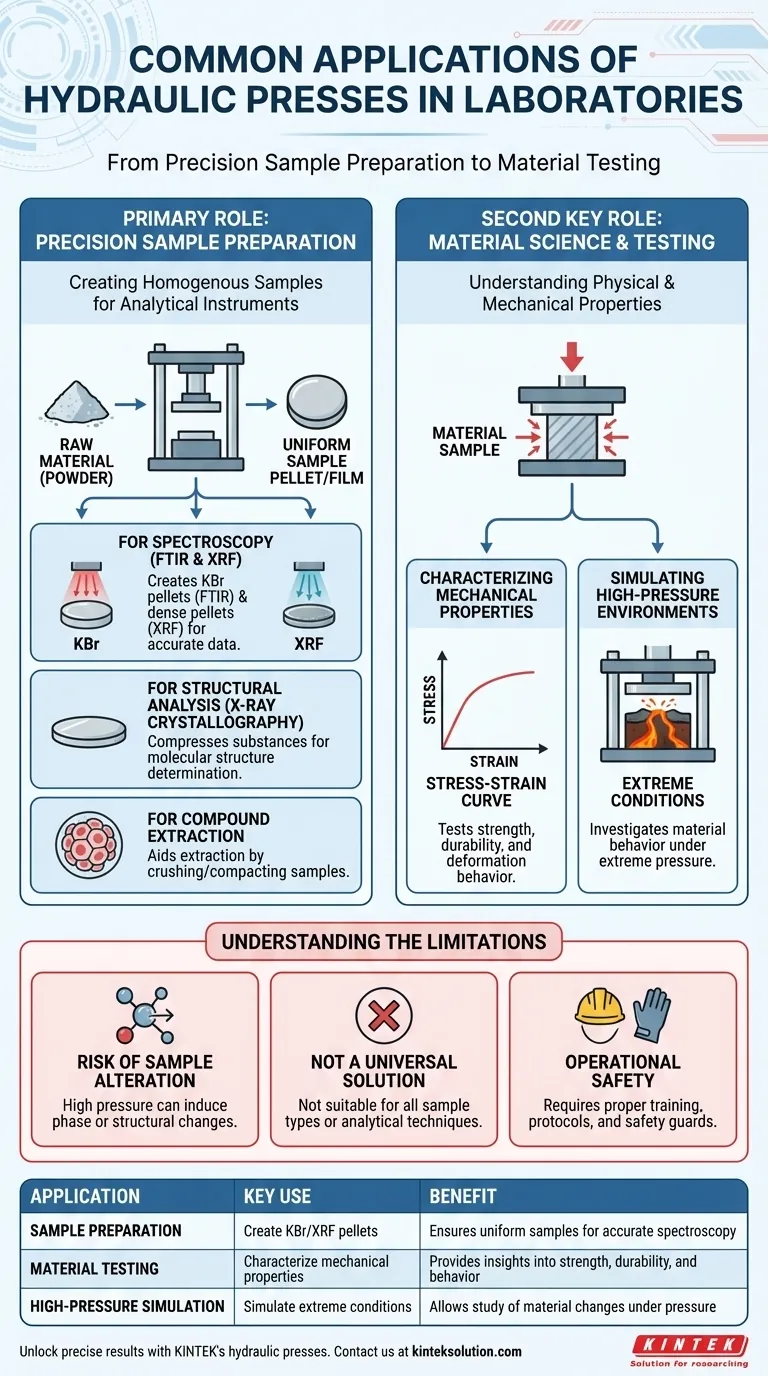
Related Products
- Laboratory Hydraulic Press 2T Lab Pellet Press for KBR FTIR
- Automatic Laboratory Hydraulic Press Lab Pellet Press Machine
- Automatic Laboratory Hydraulic Press for XRF and KBR Pellet Pressing
- Manual Heated Hydraulic Lab Press with Integrated Hot Plates Hydraulic Press Machine
- Laboratory Hydraulic Press Lab Pellet Press Button Battery Press
People Also Ask
- How are hydraulic presses used in spectroscopy and compositional determination? Enhance Accuracy in FTIR and XRF Analysis
- How do hydraulic press machines ensure precision and consistency in pressure application? Achieve Reliable Force Control for Your Lab
- What are the benefits of reduced physical effort and space requirements in hydraulic mini presses? Boost Lab Efficiency and Flexibility
- What are some laboratory applications of hydraulic presses? Boost Precision in Sample Prep and Testing
- What is the overall significance of hydraulic presses in laboratories? Unlock Precision and Power for Your Research
